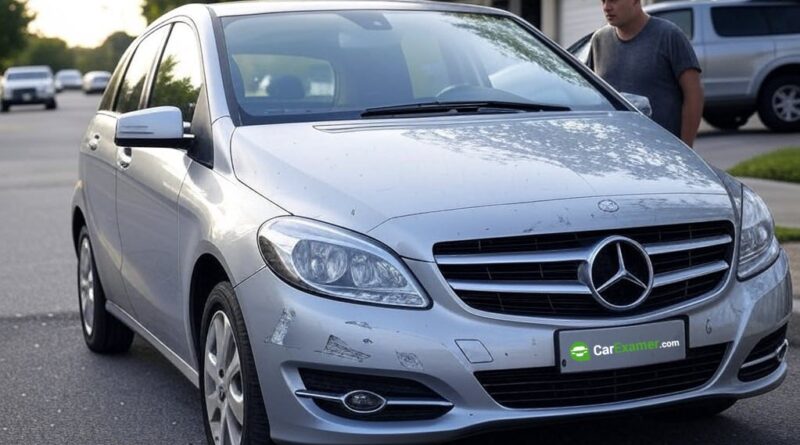Mercedes B-Class Problems: What To Know Before Buying
The Mercedes-Benz B-Class is a compact MPV (multi-purpose vehicle) that offers more space and practicality than the smaller A-Class, while still delivering the premium feel expected from the brand. Known for comfort, efficiency, and family-friendly features, the B-Class has become a popular choice for urban and suburban drivers alike. However, like any vehicle, the B-Class isn’t without its flaws. If you’re considering buying one — especially a used model — it’s important to understand the most common Mercedes B-Class problems, particularly in the W245 (2005–2011), W246 (2011–2018), and W247 (2019–present) generations.
1. CVT and Dual-Clutch Transmission Issues
Earlier B-Class models (W245) use a CVT (Continuously Variable Transmission) that has been known to fail prematurely if not maintained. Later models (W246, W247) switched to dual-clutch gearboxes, which also have common complaints.
Problems include:
- Jerky shifting
- Hesitation when accelerating
- Difficulty selecting reverse gear
- Transmission warning lights
Regular gearbox servicing and software updates can prevent costly repairs, but high-mileage vehicles should be checked carefully.
2. Turbo and Engine Performance Issues
Turbocharged petrol and diesel engines offer good performance, but some owners have reported issues such as:
- Loss of power under acceleration
- Turbo failure or lag
- Oil leaks around the valve cover or turbo system
- Rough idling or engine misfires
Most of these problems stem from clogged EGR valves, carbon build-up, or worn components. Routine oil changes and intake cleaning help reduce risk.
3. Electrical Faults and Dashboard Warnings
Mercedes vehicles often include advanced electronics, and the B-Class is no exception.
Typical electrical faults include:
- Sensor failures (ABS, airbag, TPMS)
- Faulty parking sensors
- Malfunctioning infotainment or navigation systems
- Battery drain or power loss
Software updates and diagnostic scans can help fix these problems before they lead to full system failures.
4. Suspension and Steering Wear
Many B-Class owners report issues with suspension noise or premature wear, especially in older or city-driven models.
Common signs:
- Clunking noises over bumps
- Loose steering feel
- Uneven tyre wear
Worn-out bushes, struts, and ball joints are typically to blame. These issues affect ride quality and should be addressed promptly.
5. Interior Trim and Build Quality (W245 and W246)
While the B-Class cabin is generally solid, early models (especially pre-2015) can suffer from:
- Squeaky dashboard components
- Fading or peeling button coatings
- Door lock actuator failures
Later W247 models have improved materials and better fit and finish.
6. Air Conditioning and HVAC System Issues
Some owners have noted problems with the air conditioning system, including:
- Weak airflow or non-functioning AC
- Heater blower failure
- Clicking noises from behind the dash
Often these issues are caused by a faulty blower motor or actuator, both of which can be replaced if caught early.
Final Thoughts: Is the Mercedes B-Class Reliable?
Overall, the Mercedes B-Class is a practical and comfortable compact family car. Later generations (W246 and W247) offer improved technology and reliability over the first generation. If you’re shopping for one:
- Look for a full service history
- Get a professional pre-purchase inspection
- Avoid neglected high-mileage models
With regular maintenance and proper care, the B-Class can be a dependable daily driver with premium comfort and features.
Buying a used VW. Buying used vauxhall, BMW, Jaguar, Ford, Volvo, Range rover, Bentley, Aston Martin, Porsche, Ferrari, Lamborghini, Maserati, Hyundai, Tesla, Honda, Pagani

